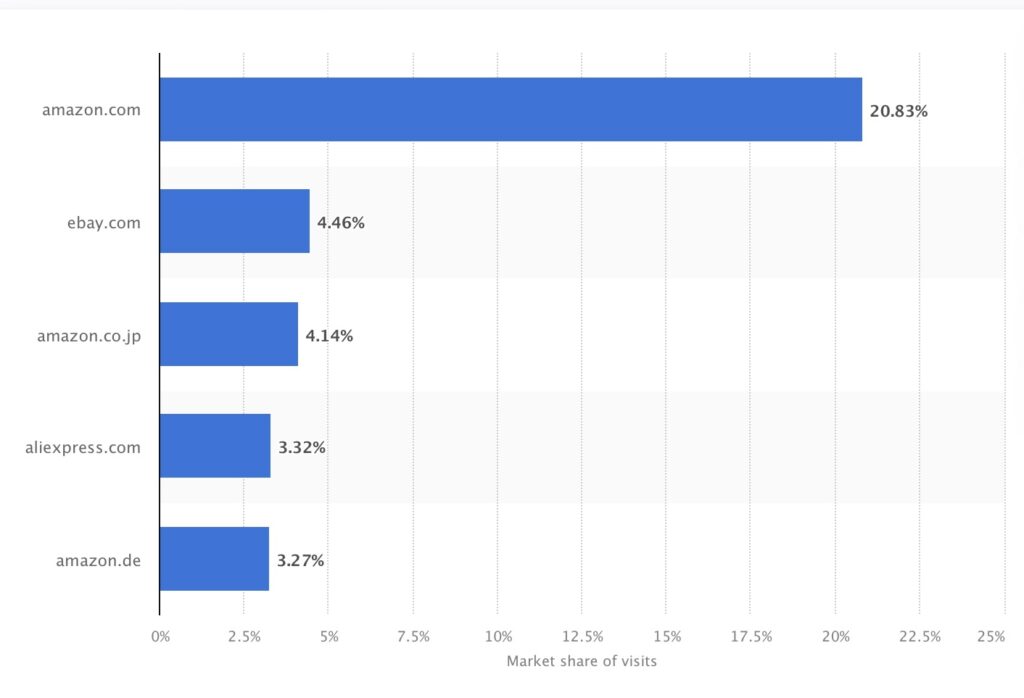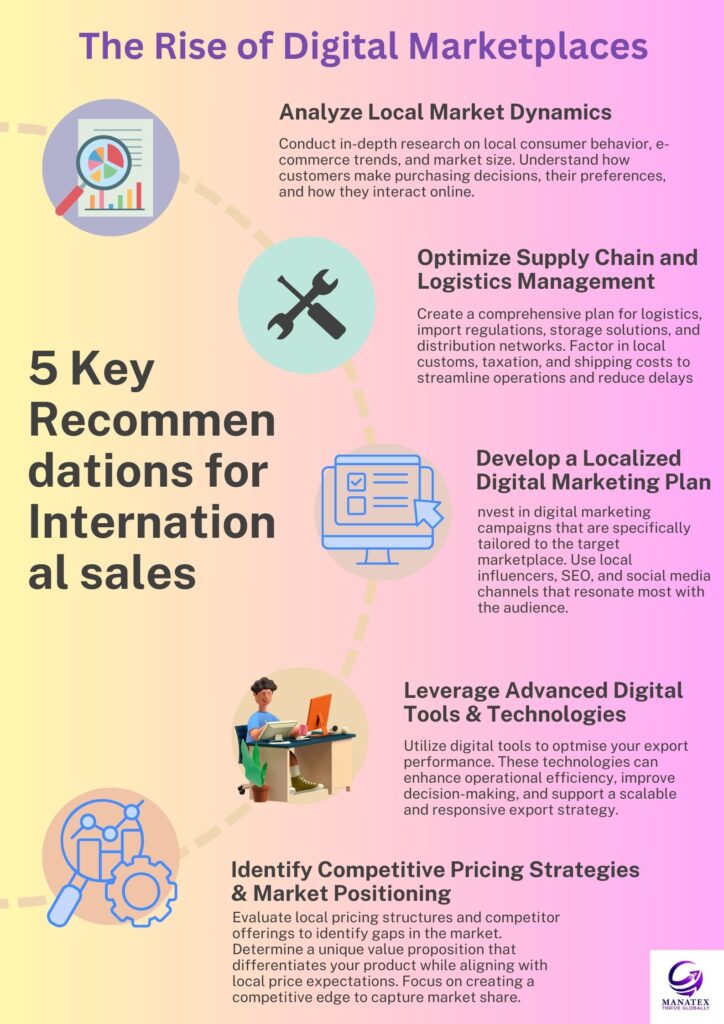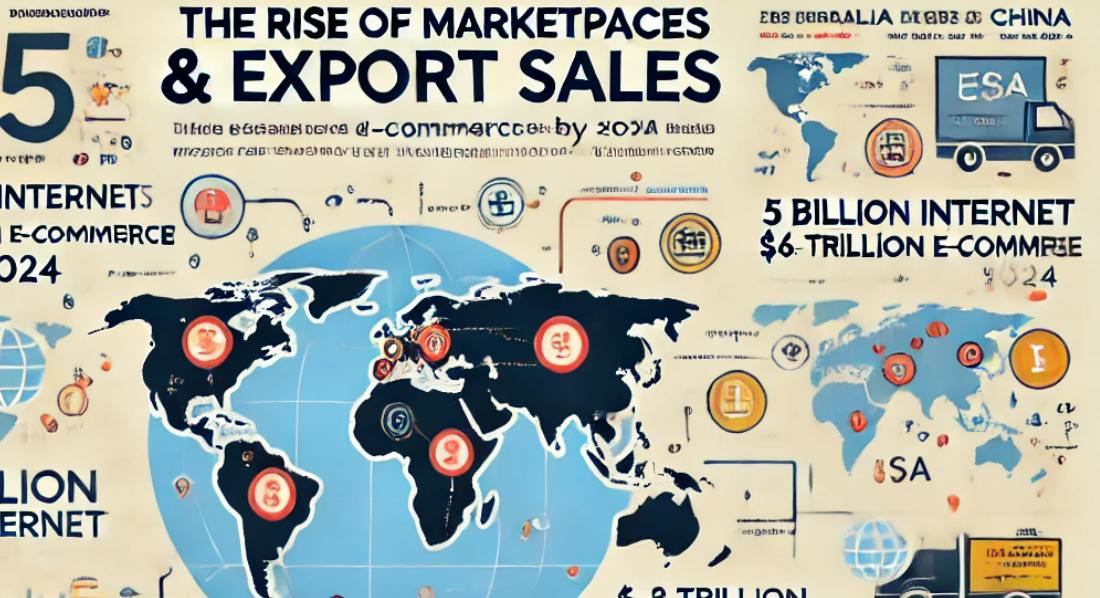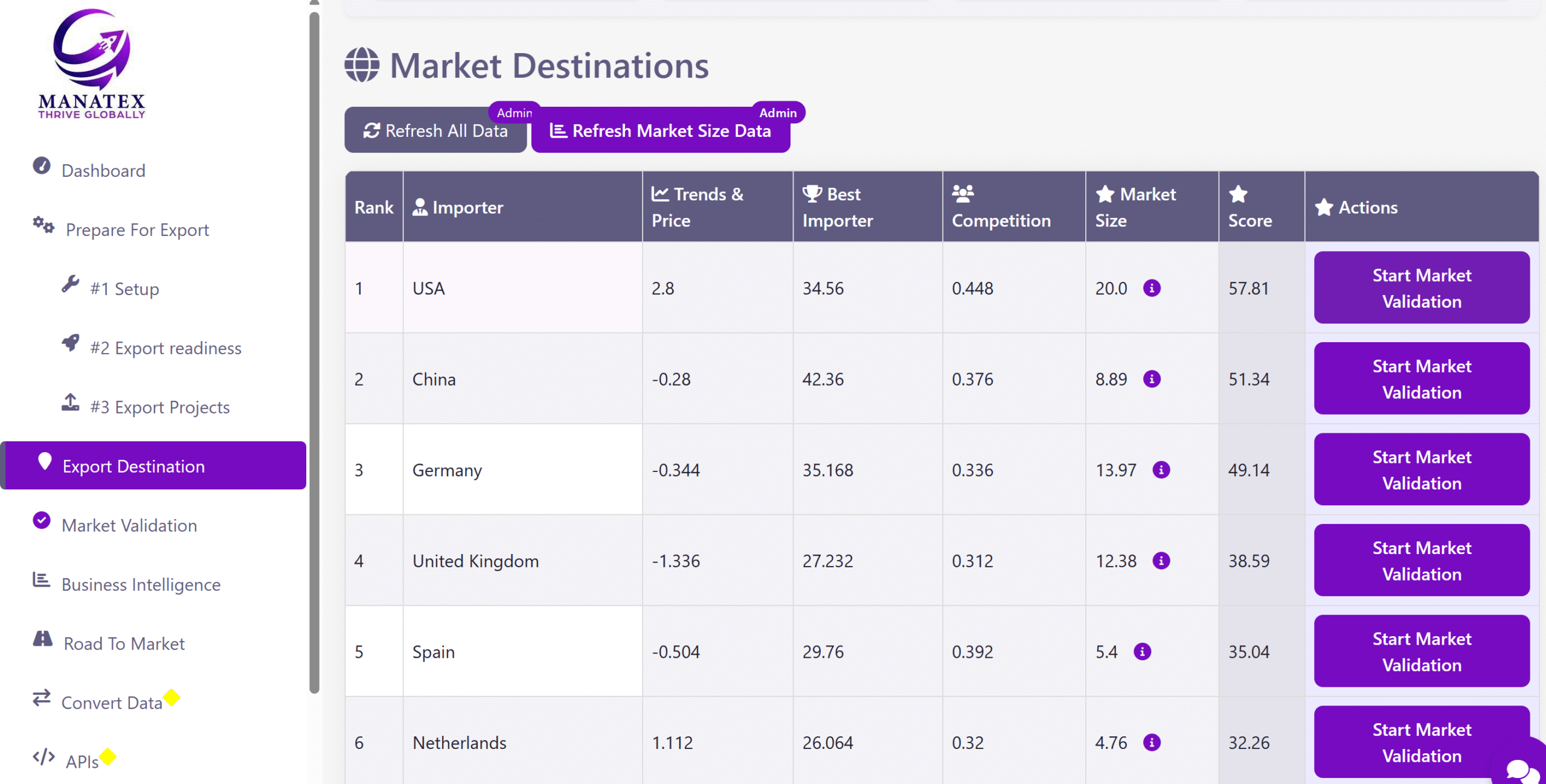Both B2B and B2C export sales processes were severely transformed during the last decade because of the rise of digital marketplaces.
E-commerce is now a vital component of international retail. Like numerous other sectors, the purchasing and selling of goods has experienced a significant shift with the introduction of the Internet. One of the factors that accelerated e-commerce growth was the COVID-19 global pandemic situation. As a result of the continuous digitization of contemporary life, customers worldwide are currently able to enjoy the benefits of online transactions. With over five billion internet users globally, the number of people making transactions online is always rising as internet access and usage grow quickly.
According to Statista, retail e-commerce sales are predicted to surpass 6.3 trillion USD globally in 2024, and these numbers are anticipated to rise even further in the years to come.
The most specific power of e-commerce is that this channel helps brands build value with a Direct-to-consumer approach. There are numerous success stories in any industry. With hundreds of marketplaces working in various countries, Amazon retains the palm of honor.
Picture: Most popular online marketplaces worldwide (December 2023, Statista)

Online distribution plans became part of the export strategy of any strategic thinking producer because e-commerce presence and visibility became critical for end users all over the world.
A lot of vendors and one-person companies build online distribution via digital marketplaces and many of them also do it successfully across borders. One good example from the practice of the author was the company that successfully managed Amazon business in the USA, while the personnel of the company was in Australia and the product was sourced in China. Who could imagine it e.g. in 2010?
However, there are local specifics that exporters should keep in mind. Amazon is an empire but still isn’t a market leader everywhere. For example, Allegro holds up to 90% market share in Poland and Tmall is an absolute leader in B2C e-commerce sales in China.
But this is not just a platform that makes China a distinguished market. What makes China truly unique here is e-commerce is perfectly integrated with social media. This integration creates a very special user experience that is inaccessible to users in many other countries. China is a great place for foreign businesses to present their goods to a wide range of interested consumers, thanks to the country’s expanding cross-border e-commerce market and rising demand for goods from other countries.
According to Statista, the emergence of China’s e-commerce market inaugurated a new era in the country’s economy. Nowadays, the digital economy is making an increasingly significant contribution to the country’s GDP. In 2023, more than a quarter of China’s consumer goods were sold online, far above the global average. At the same time, local consultants urge the companies that target the Chinese market: local users are extremely picky and demanding, digital marketing techniques applicable in the USA and Europe don’t work on the Chinese market at all, competition is fierce, etc, etc.
China is just one example out of many. So, what are the general recommendations for those who want to start selling abroad using digital marketplace channels?
- Understand local e-commerce behavior and market size. You need to collect data on how local end users make purchase decisions, how big is the audience, and how people share their opinions about the purchase on the internet.
- Do good research on prices and find your niche. Also please remember that for many products, especially those that are relatively expensive, consumers tend to compare prices online.
- Get prepared to invest in digital marketing. T
 he algorithm of the marketplace is very specific. There are so many aspects (not easy to learn) that influence the ranking of the product etc. Digital marketing helps to keep the product in front of the eyes of the consumer. As mentioned above, there are local specifics in different markets. Meaning that different digital marketing tools are more or less effective in various countries.
he algorithm of the marketplace is very specific. There are so many aspects (not easy to learn) that influence the ranking of the product etc. Digital marketing helps to keep the product in front of the eyes of the consumer. As mentioned above, there are local specifics in different markets. Meaning that different digital marketing tools are more or less effective in various countries. - Please remember, that you need to find a solution with importation (if necessary), logistics, and storage in advance. This is an additional cost that one has to keep in mind.
- Modern digital tools can support you a lot here with price monitoring, content creation, customer services, etc. Don’t ignore modern tech power!





